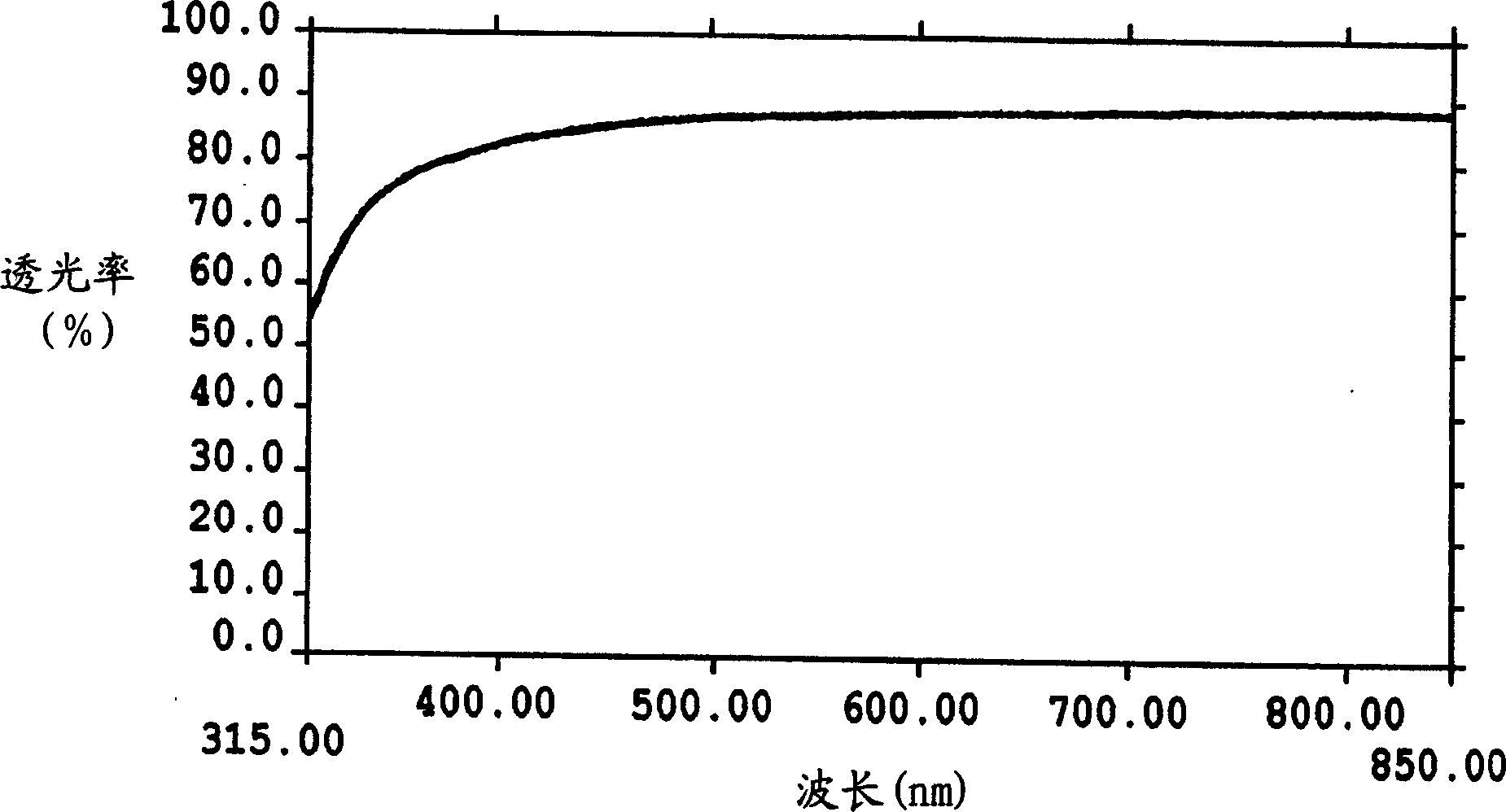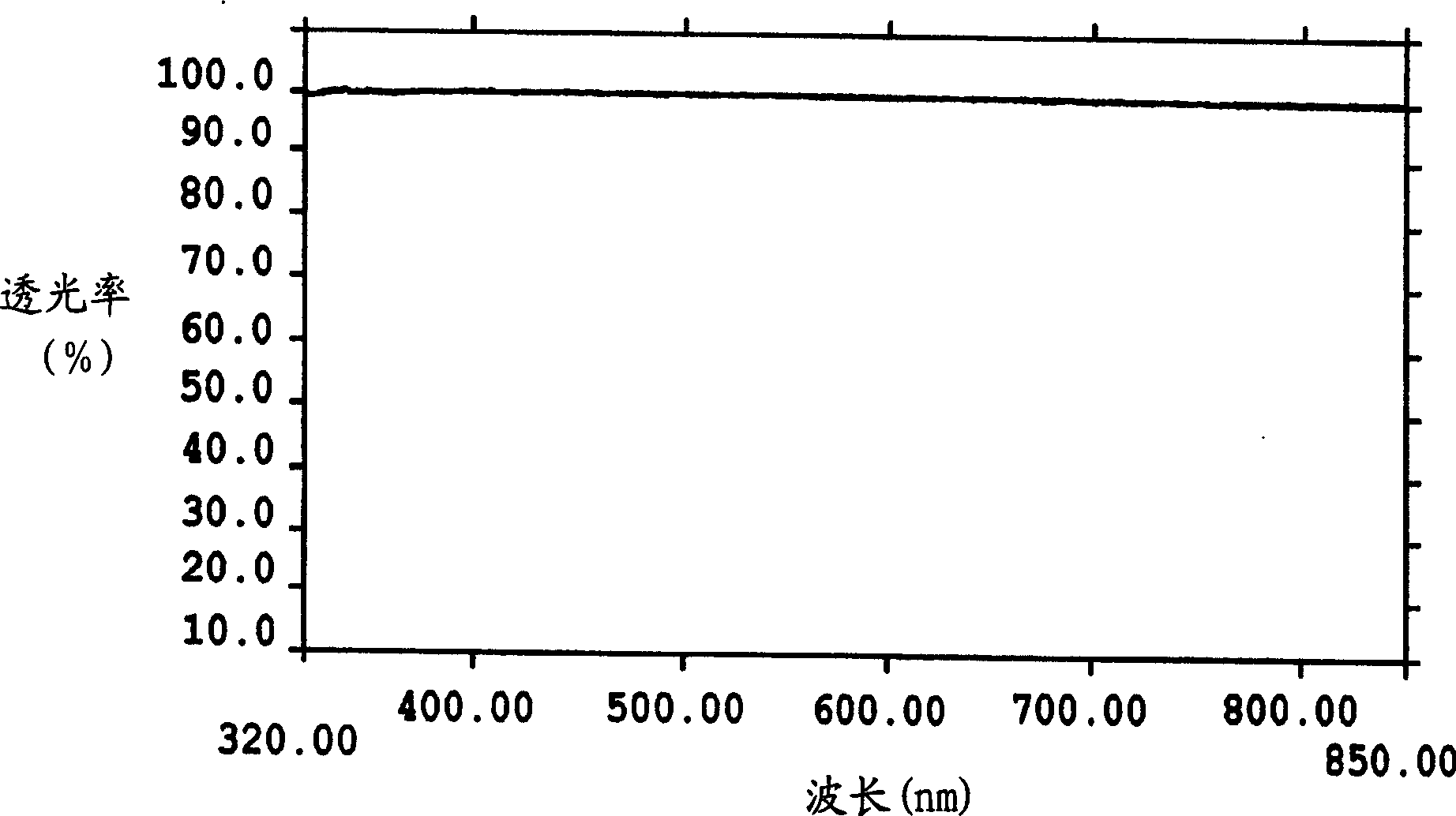Layered titanic acid, lamellar titanic acid, lamellar titanium oxide and method for producing lamellar titanic acid
A titanic acid, layered technology, applied in chemical instruments and methods, titanates, titanium compounds, etc., can solve problems such as increasing energy consumption and reducing productivity
- Summary
- Abstract
- Description
- Claims
- Application Information
AI Technical Summary
Problems solved by technology
Method used
Image
Examples
Embodiment 1
[0036] 27.64g of potassium carbonate, 4.91g of lithium carbonate, 69.23g of titanium dioxide and 74.56g of potassium chloride were mixed into raw materials after dry grinding. It was then fired at 1,100° C. for 4 hours. After burning, the sample was soaked in 10 kg of pure water, stirred for 20 hours, separated, washed with water, and dried at 110°C. The resulting white powder was identified as multilayered titanate K 0.80 Li 0.266 Ti 1.733 o 4 , it has an average particle size of 44 μm and an average thickness of 3 μm.
[0037] 65g of the K 0.80 Li 0.266 Ti 1.733 o 4 After being stirred and dispersed in 5kg3.5% hydrochloric acid, the K ions and Li ions in it are replaced by hydrogen ions or hydronium ions. Subsequent separation and washing with water resulted in multilayered titanic acid. K in multilayer titanic acid 2 The balance of O is 2.0%. The ion exchange rate of K reaches 92%, while the ion exchange rate of Li reaches more than 99%. The combined ion exchan...
Embodiment 2
[0039] Adopt the same condition as embodiment 1 to synthesize layered titanate, K 0.80 Li 0.266 Ti 1.733 o 4 . 65g of the K 0.80 Li 0.266 Ti 1.733 o 4 After being stirred and dispersed in 5kg of 0.17% hydrochloric acid, the K ions and Li ions in it are replaced by hydrogen ions or hydronium ions. Subsequent separation and washing with water resulted in multilayered titanic acid. K in multilayer titanic acid 2 The balance of O is 4.5%. The ion exchange rate of K reaches 82%, while the ion exchange rate of Li reaches more than 99%. The combined ion exchange capacity of K and Li reaches 86%. This multilayer titanic acid was dispersed in 5 kg of water. Subsequently, 250 g (11 equivalent %) of a 1% n-propylamine solution in water were added with stirring. After stirring for 30 minutes, 3.5% hydrochloric acid solution was added to adjust the acidity pH of the solution to 2.0. After stirring for a further 1 hour, the dispersion was isolated by suction filtration. Dispe...
Embodiment 3
[0041] The layered titanic acid was synthesized under the same conditions as in Example 1, except that the basic compound used in the delamination was 350 g (12 equivalent %) of 1% isopropanolamine solution. The measurement results showed that the K in the powder 2 The balance of O was 1.0%, the average particle diameter was 30 μm, and the average thickness was 0.2 μm.
PUM
| Property | Measurement | Unit |
|---|---|---|
| thickness | aaaaa | aaaaa |
| particle size | aaaaa | aaaaa |
| thickness | aaaaa | aaaaa |
Abstract
Description
Claims
Application Information
 Login to View More
Login to View More - R&D
- Intellectual Property
- Life Sciences
- Materials
- Tech Scout
- Unparalleled Data Quality
- Higher Quality Content
- 60% Fewer Hallucinations
Browse by: Latest US Patents, China's latest patents, Technical Efficacy Thesaurus, Application Domain, Technology Topic, Popular Technical Reports.
© 2025 PatSnap. All rights reserved.Legal|Privacy policy|Modern Slavery Act Transparency Statement|Sitemap|About US| Contact US: help@patsnap.com



